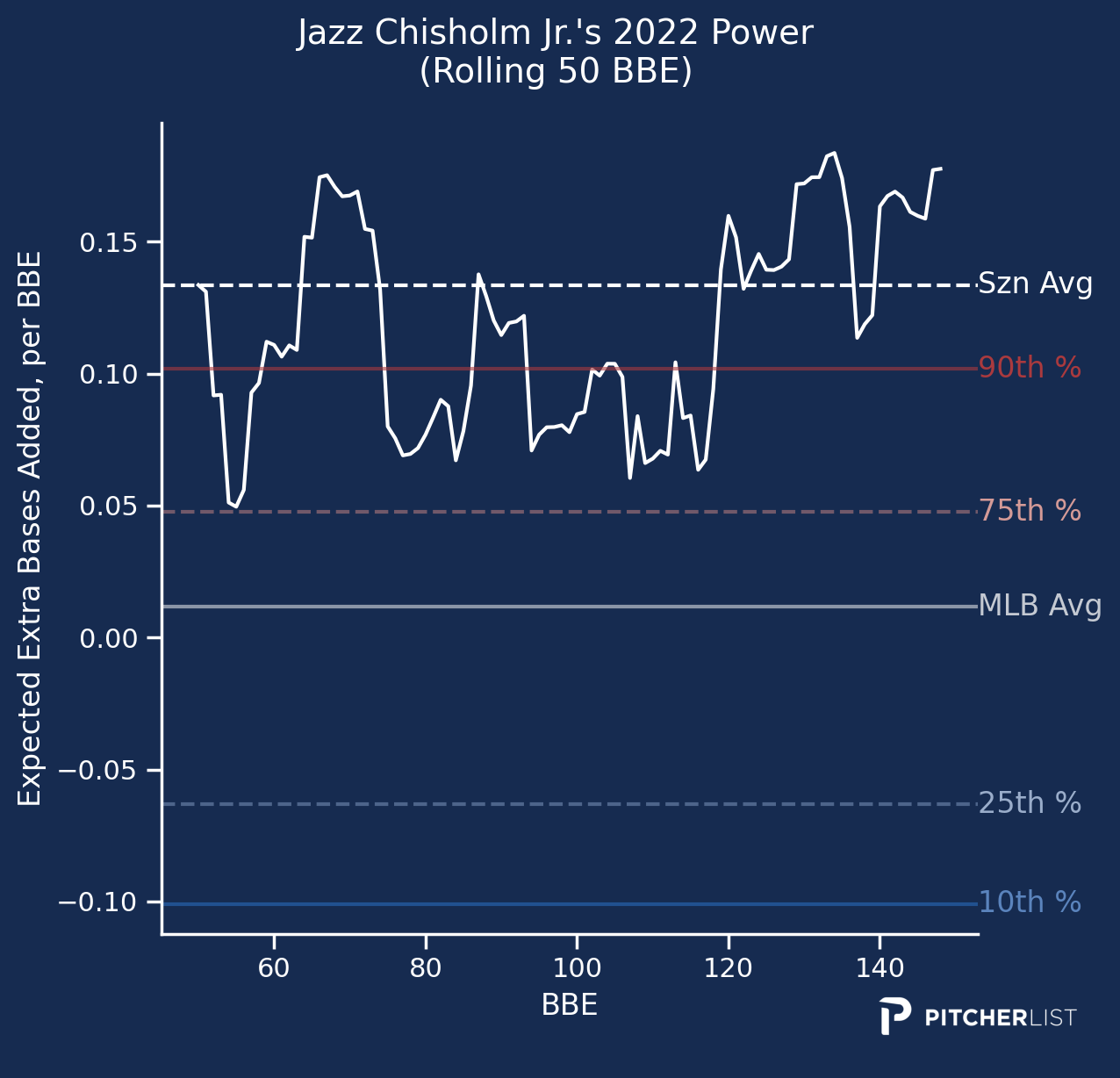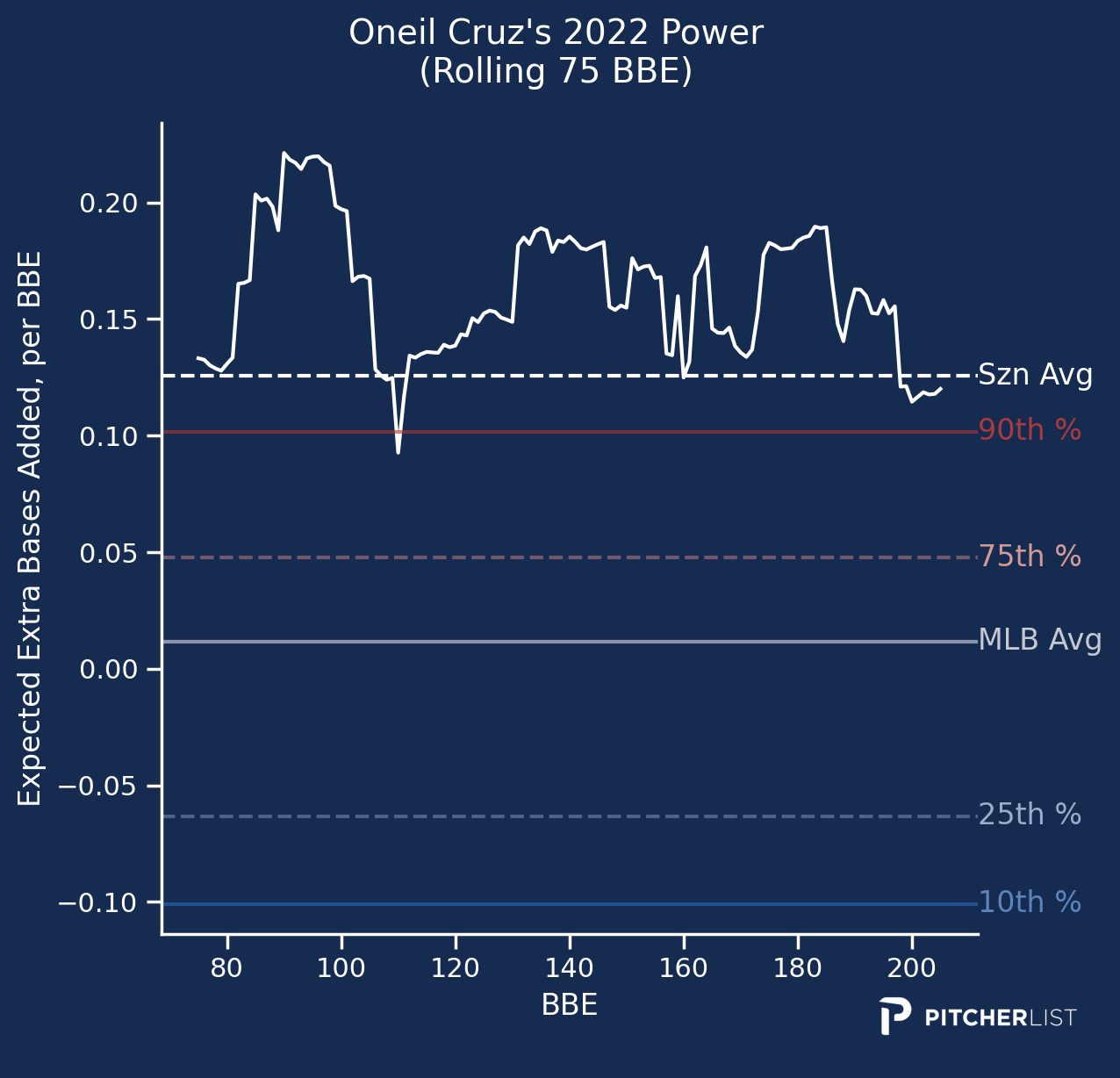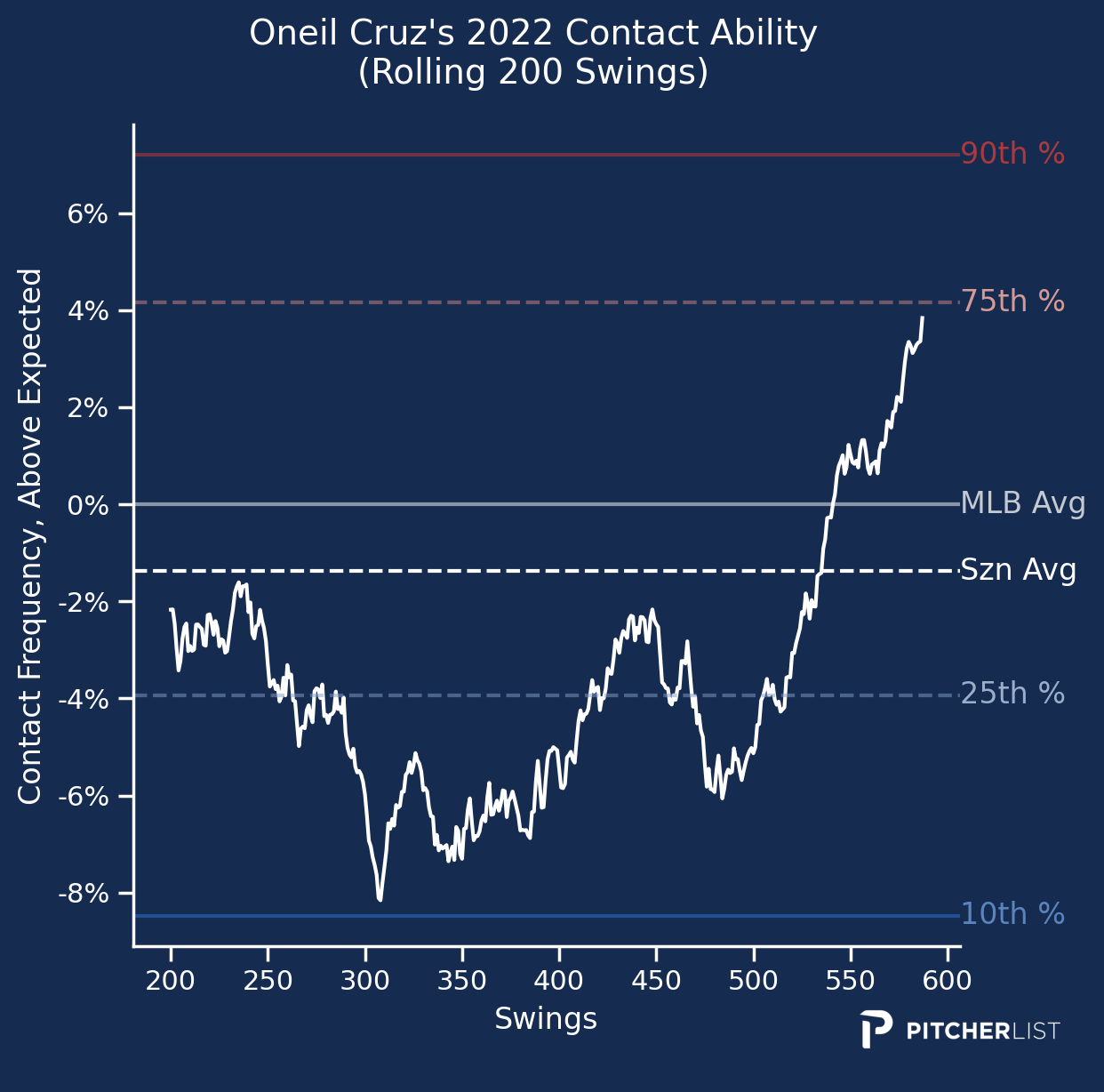There are many factors that come into play when determining where to pick a specific player, but chief among them is expected production. It seems like a concept that should go without saying, and in a way it kind of does, but for the most part, we’re making a statement with every pick that we expect to get the most production out of that individual from the pool of available names.
However, expected production is only one factor. After that, we have to account for a plethora of factors, including injury risk, roster fit, and the variability in a player’s outcome.
But what can we do when just the right combination of factors come together to form a perfect storm, leading to significant ADP gaps in players with similar expected production?
Well, that’s when we pounce on value, and this is what we’ll do today. We’re going to look at a couple of duos who share very close expectations but can be selected in very different spots in your draft.
Outfield: Mookie Betts (10.81 ADP) – George Springer (68.42 ADP)
Firstly, a small disclaimer. When I first had the idea for this article, one of the combinations I had on my mind was this one. It came before we got the news that the Dodgers do intend on playing Mookie Betts at second base, frequently enough that he should get eligibility there for this season at some point in the first half, which definitely changes things up. However, the point still stands, as we’re not necessarily here to dunk on Betts’ ADP, and also because even without second base eligibility, he would’ve been a fringe first-round pick, at worse.
Betts and Springer are both the perfect embodiment of the modern-day leadoff hitter. Betts ran more at the beginning of his career but hasn’t stolen more than 16 bags since his MVP campaign in 2018. They’re both elite sluggers (Betts at .227 career ISO, and Springer at .225) with good, but not traditional leadoff hitter batting average, who routinely run a walk rate above 10%.
So why is Betts going in the back end of the first, and Springer is coming in at pick 72, keeping in mind that Betts would be a first-round guy even with no 2B eligibility? Well, there are many reasons for it:
- Although Betts doesn’t come without meaningful injury risk, Springer is a much riskier play, having missed a little over half of the 2021 campaign, and playing through an elbow issue last season that severely limited his capabilities with the bat.
- Historically, Betts has been a big plus at batting average with just as much and on many occasions more pop, not to mention the running ability that Springer has never touched, with Springer sitting in the .260s for most of his career outside an outlier year in 2018, when he hit .292.
A closer look points to greater proximity between these two.
There is a great article on FanGraphs outlining the struggles that Springer ran through last season, with an elbow injury that he played through, and it clearly affected his swing. His ground ball rate crept back up to 44.5% after sitting in the 30s for his last two seasons, and his HR/FB rate at 15.9% represented a career low.
If Springer can replicate his performance over the prior three seasons (2019-21), in which he slugged a whopping .570, he could feasibly outproduce Betts, but even if he can’t and remains at the level he showed last season, which still netted him 25 home runs in 133 games, the Blue Jays’ leadoff bat will be a steal at his ADP.
One of the bigger gaps between these two hitters has been in runs scored. Betts came in at 117 last season, and Springer only at 89. Now, you can look at that stat and proclaim that they’re in two separate leagues, but here is the reality:
- Their stat lines show very similar hitters
- They’ll both continue to be the primary leadoff man for two potent offenses, with the Dodgers likely losing a step following the departure of Trea Turner, although the same could be said to a lesser extent about Teoscar Hernández leaving the Jays.
- If they play the same number of games, which is a significant “if”, do we really expect Betts to put up more?
Lastly, the speed factor that may have separated these two in years past is no longer there.
Mookie Betts stole fewer bases than Freddie Freeman last season, Betts had 12, while Freeman had 14. It is difficult to predict stolen bases, especially with the new rules- just look at Springer, who despite remaining steady at a sprint speed of 28 ft per second, decided to run more last season and stole 14 bags on 16 attempts.
Both Springer and Betts have the speed to run more than they did last season, but neither Toronto nor Los Angeles seem to be running teams, sitting in the middle of the pack in stolen base attempts per game last season. The point is that while it can happen, you should not expect difference-making numbers out of either of these guys in the 2023 season.
Conclusion
The point of this exercise wasn’t to bash Betts in any way, he is a fine pick where he is going, but the fact that Springer, whose offensive floor and ceiling are rather close to that of Mookie’s, is going several rounds later, indicates a value to be had in each of your drafts.
The worst version of Springer (119 wRC+ in 2018) still gave you 20+ homers, 102 runs scored, and a batting average in the mid .260s, while the best one smashed 39 bombs, accumulated 96 runs and 96 RBI, while nearly hitting .300.
The Blue Jays’ leadoff hitter is a major target for me in all my drafts.
Middle-Infield: Jazz Chisholm Jr. (34.78 ADP) – Oneil Cruz (61.23 ADP)
Another disclaimer much like in the sense of Betts-Springer, Jazz holds a distinct advantage over Cruz in that not only is 2B a shallower position than shortstop, but he’ll also obtain outfield eligibility very soon into the 2023 season, as the Marlins have announced he’ll be their primary centerfielder with the additions of Jean Segura and Luiz Arraez to bolster their infield.
Nevertheless, despite those two points making sense, Jazz’s ADP didn’t really move drastically following the move into the outfield, and the purpose of this article isn’t to necessarily dunk on the Marlins’ All-Star but to acknowledge Cruz as a similar option at a much later point in the draft.
There are many similarities between these two bats. Albeit for different reasons they both had a limited sample to display their skills, a stress fracture in his lower back limited Jazz to only 60 games in 2022, although the damage he did in those 241 plate appearances was good enough to earn him his first All-Star game induction.
Cruz on the other hand had to wait longer than I think we all expected to come up to the big league club in 2022, and maybe with some bottled-up frustration, didn’t quite hit the ground running, which left him with little time to boost his final stats. After a strong final 29 games, he flashed a 147 wRC+ and .525 SLG.
Overall though, with both of these bats, we’re looking much more at their projections for 2023 rather than their career outputs, as we’ll follow a different approach than we did with Betts-Springer.
Let’s have a look at the ATC projections for these two budding superstars.
Projections-wise, they are basically the same hitter to the point where they’re kind of indistinguishable, but there are many nuances and specific factors to assess in order to understand their gap in ADP. So let’s get to it and why all of this shouldn’t deter you from viewing Cruz very closely to how you view Jazz.
Firstly, Chisholm is coming off his third season in the big leagues, and inarguably his best one yet. Although the counting stats don’t show a big gap between him and Cruz, the latter was still able to hit for power and steal even through his early woes. Jazz did bolster a significantly better wRC+ (136) than Cruz (106), and any difference that big has to be acknowledged.
Now let’s look at the reasons why Cruz may just be scratching the surface in terms of what he did in his rookie season and the potential outcome over a full campaign.
Here are the rolling charts in terms of power (Expected Extra-Bases Added per BBE) for both Jazz and Cruz in 2022.


No surprises, right? These are two of the top pound-for-pound bats in the world, and they showed that. They both had hard-hit rates at roughly 46% according to Savant, but one of the issues that separated Jazz from Cruz is that Oneil had a rather poor judgment of the strike zone in the early stages of his big league career.
Cruz rivalled Jazz in xwOBACON, coming at .439, while Jazz had a .442 mark. What marked the quote-unquote struggles of Cruz is that he swung much more infrequently at pitches inside the zone, bolstering a 54.4% Z-Swing%, with Jazz much higher at 67.7%. When you hit the ball as hard as Cruz does, you want to bump those numbers up, and on that note let’s analyze the rolling chart for decision value by the Pirates’ shortstop.


In both areas, Cruz made strides as the season progressed-and as our pal Scott Chu mentioned in his top 30 SS article, which you should totally check out by the way-because he hits the ball so hard, Cruz didn’t sacrifice much power to improve in those aspects, which makes for a very promising 2023 campaign.
Jazz holds an edge in stolen base projections (ATC has him at 26, and Cruz at 18), but the big edge that Jazz had over him may not be there moving forward or at least is a bit murky right now. According to a formula developed by Adam Howe that measures stolen base aggression based on a myriad of factors, which you can read about here, Don Mattingly was the second biggest SB-happy manager over the last seven seasons.
Miami could continue to run as they’ve done in the past, but we can’t say that for certain with new manager Skip Schumaker. Plus, and we always take these things with a grain of salt, Cruz indicated early in the spring that his goal is a 30-30 season. With a sprint speed in the 98th percentile and a likely leadoff role, the tall shortstop should run wild.
Conclusion
Oneil Cruz and Jazz Chisholm Jr. share very similar profiles and expectations heading into this season. If you miss out on the Marlins’ center fielder, there is no reason not to feel excited about the prospect of getting Cruz a couple of rounds later.


I met Jazz at a ST game and he said that he will be a 40-40 guy this year. I just asked for 30-30.
This entire article can be summed up by saying “2B is shallow and you have to pay a premium”